James R. Callan's Blog, page 17
April 1, 2016
Insight into Sight
Today’s guest blogger is Mary L. Hamilton. She claims she grew up at a youth camp in Wisconsin, so when she writes her Rustic Knoll Bible Camp series, she knows what she is talking about. Thus far, there are three books in the series. And she’ll give away a copy of See No Evil to one person who leaves a comment, selected at random. Here’s a problem she ran into on the third book.
a youth camp in Wisconsin, so when she writes her Rustic Knoll Bible Camp series, she knows what she is talking about. Thus far, there are three books in the series. And she’ll give away a copy of See No Evil to one person who leaves a comment, selected at random. Here’s a problem she ran into on the third book.
Things You Probably Never Knew About Sight
Imagine you’ve been blind from a very young age, and now as an adult, you undergo a corneal transplant. Suddenly, the world opens up and you’re able to see the faces of loved ones, the colors of nature, the mountains in the distance.
Or maybe not. Some interesting things occur when vision is recovered after childhood blindness. As sighted people, we grow up learning the variations and shades of colors. But to someone who has never seen color, the variety can be confusing. How can baby blue, royal and navy all be the color blue? How can a woman with yellow hair, a child with nearly white hair and a dog with honey-colored fur all be blond?
Faces pose a problem for those who never learned to identify others according to physical features. Facial expressions too are useless when you’ve never associated the emotion with the expression. Even identifying gender can be difficult when you’ve never had the opportunity to learn the social cues that help us distinguish between men and women.
As children, we learn depth perception naturally through our ability to see. We crawl, we reach for objects and fall from heights. All those normal childhood activities help our brains learn to gauge depth. But without sight to determine distance, a child’s brain never develops depth perception, and the adult brain finds it almost impossible to “catch up” when vision is restored.
In my Rustic Knoll Bible Camp series, one character is a teenage camper who’s been blind as long as he can remember. I’d planned to feature him in the third book, See No Evil, having undergone a corneal transplant so he could see the camp he’s been coming to since he was five. Although the problems and necessary adjustments I’ve mentioned would’ve made a fascinating story, I feared it would take over the story I wanted to tell. With great reluctance, I kept my character blind. But my research gave me an incredible appreciation for this gift of vision!
Here’s a blurb for See No Evil.
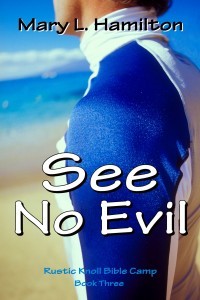 Steven Miller (17) guards a dark secret. Dad drilled into Steven that blindness should never be used as an excuse. So when Steven finds an old triathlon medal among his dad’s belongings, he’s inspired to follow in his footsteps. Maybe it’ll quiet the guilt he’s carried since Dad’s death three years ago.
Steven Miller (17) guards a dark secret. Dad drilled into Steven that blindness should never be used as an excuse. So when Steven finds an old triathlon medal among his dad’s belongings, he’s inspired to follow in his footsteps. Maybe it’ll quiet the guilt he’s carried since Dad’s death three years ago.While Steven continues his triathlon training during his final summer at camp, a serious illness keeps Rustic Knoll’s beloved Nurse Willie from managing her clinic. When Steven teams up with his friend Claire to encourage Willie’s recovery, his feelings for Claire grow beyond friendship. But Claire prefers his training buddy Dillon. And Dillon has started down a dangerous path that Steven knows all too well.
Can Steven keep his friend from falling into that sin without exposing his own past?
JIM: Remember, Mary will give away a copy of See No Evil to one person, selected at random, who leaves a comment – even a short one.
And check out her website at: : http://www.maryhamiltonbooks.com
She’s on Facebook at: http://www.facebook.com/maryhamiltonbooks
Find her on Pinterest: http://www.pinterest.com/mhamiltonbooks
March 25, 2016
A Good Suggestion
Today, Gay Ingram is visiting and offering a good suggestion for all writers. Gay is a prolific writer, publishing both fiction and non-fiction. In addition, she is active in several writers groups, maintains a website, and blogs.
writers. Gay is a prolific writer, publishing both fiction and non-fiction. In addition, she is active in several writers groups, maintains a website, and blogs.
What do we authors want most of all? Readers. Experts advice published authors to build a readers base. Suggestions on how to accomplish this proliferate. Use social media; create a blog; have a presence on Facebook, Twitter, LinkedIn, StumbledOn, Pintrest…the list goes on and on. If you are diligent and determined, you soon find yourself dedicating hours to the internet.
Then there are those who advocate personal one-on-one interaction with the reading public. Soon, you find yourself laboring under a heavy schedule of speaking engagements, school visits, book shows, and signings. This leaves very little time for the actual writing.
For a published author to be successful these days, it becomes necessary to wear many hats and become involved in a multitude of activities. All of which, takes you away from what brings joy to your heart, writing.
With the recent revolution in the availability of books both in print and in digital, we are seeing a proliferation of books. On the other hand, the number of people who take the time to read a book has dropped significantly because of the internet.
So what are we published authors to do?
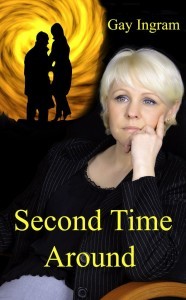 A recent article featured a roundtable discussion of several independent publishers. Here’s what a couple of them had to say: Barbara Epler publisher of New Directions said, “I think the main concern is finding readers for amazing books.” “Could any of us have enough readers? More book clubs. Get the books into readers’ hands.” That’s from C. J. Evans, Editorial Director of Two Lines Press in the Nov/Dec 2015 issue of Poets & Writers.
A recent article featured a roundtable discussion of several independent publishers. Here’s what a couple of them had to say: Barbara Epler publisher of New Directions said, “I think the main concern is finding readers for amazing books.” “Could any of us have enough readers? More book clubs. Get the books into readers’ hands.” That’s from C. J. Evans, Editorial Director of Two Lines Press in the Nov/Dec 2015 issue of Poets & Writers.
Which got me to thinking. How does one begin a book club? I would suppose the same way we writers form a critique group…by bringing together some like-minded folks. So, what if we went to our local library, local newspaper, or maybe people we socialize with or go to church with? What if we agreed to meet for a couple of hours once a month, having all read the same book, and talk about our experience in the reading and how the book did or did not affect us?
I’m already planning to write a letter to my community newspaper editor, have a visit with my local librarian. There’s even a community- action group director who’s always interested in ways to make our community a better place to live. I want to talk to that director.
Whom can you talk to?
JIM: What do you think? Can you get a book club started? Let’s hear your thoughts on this.
Visit Gay’s author page on Amazon at:
http://www.amazon.com/Gay-Ingram/e/B0...
March 18, 2016
The Wild Side of Writing
Today’s guest is Deborah Dee Harper, a writer from Tennessee who graduated from Jerry B. Jenkins Christian Writers Guild where Misstep was a finalist in the 2009 Operation First Novel competition. She will be giving away a copy of Misstep to one of the persons who leave a comment. Read her post here and I’m sure you’ll want to grab one of her books.
who graduated from Jerry B. Jenkins Christian Writers Guild where Misstep was a finalist in the 2009 Operation First Novel competition. She will be giving away a copy of Misstep to one of the persons who leave a comment. Read her post here and I’m sure you’ll want to grab one of her books.
I lived in Alaska for a total of five years with my daughter and her Air Force firefighter husband, one year near Fairbanks and the other four in Anchorage. We lived in military housing which lent a measure of added security to our lives as no one was admitted to the base without proper identification. That cut down on the possibility of theft and/or bodily harm by humans, but did nothing to keep out the wild animals, including bears, moose, wolves, and foxes. The base officials did their best to discourage the wildlife from roaming through the housing areas by prohibiting vegetable gardens, installing bear-proof refuse containers, and strictly enforcing the removal of garbage containers no later than the evening of the day it was picked up. Theoretically, that kept them at bay.
In reality, though, how does one stop an 1800-pound moose or a mama bear with her cubs from doing whatever they darned well please? You don’t.
 This beauty surprised us one morning when she strolled past our living room window. (The cat was horrified.) I did a particularly dumb thing by going outside to get pictures from another angle, and discovered she wasn’t in the mood to pose. Despite its size (and this one wasn’t as big as some I’ve seen), a moose can move swiftly and with deadly results. Once you’re stomped by a moose, you either die or live the rest of your life respecting their size, speed, and strength. Happily, this moose decided to keep moving and spared me the embarrassment of becoming one with the sidewalk.
This beauty surprised us one morning when she strolled past our living room window. (The cat was horrified.) I did a particularly dumb thing by going outside to get pictures from another angle, and discovered she wasn’t in the mood to pose. Despite its size (and this one wasn’t as big as some I’ve seen), a moose can move swiftly and with deadly results. Once you’re stomped by a moose, you either die or live the rest of your life respecting their size, speed, and strength. Happily, this moose decided to keep moving and spared me the embarrassment of becoming one with the sidewalk.
The surprising take-away from this experience directly impacted my writing. Up to that point, I’d been cautious about the events I wrote into my novel. Is this too unbelievable? Unrealistic? Will the reader accept this without tossing the book aside? It occurred to me that unbelievable things happen to people all the time. Take the moose outside our window as an example, or the time my daughter and I encountered a black bear alongside the road and watched him eat dandelions for 45 minutes. How about the evening we discovered a wolf in the woods on base (dangerously close to several homes), or the time the bear wandered down the sidewalk near the commissary and I got in trouble with the base security guards for taking a picture, or spending a half-hour all alone with the mama and baby moose (newly hatched) along the road to the base hospital? And let’s not forget the evening I got out of the car on a lonely gravel road and chased a grizzly bear until I got a picture. When I arrived in Alaska, I could never have predicted these events; they were too inconceivable, outlandish, impossible.
a black bear alongside the road and watched him eat dandelions for 45 minutes. How about the evening we discovered a wolf in the woods on base (dangerously close to several homes), or the time the bear wandered down the sidewalk near the commissary and I got in trouble with the base security guards for taking a picture, or spending a half-hour all alone with the mama and baby moose (newly hatched) along the road to the base hospital? And let’s not forget the evening I got out of the car on a lonely gravel road and chased a grizzly bear until I got a picture. When I arrived in Alaska, I could never have predicted these events; they were too inconceivable, outlandish, impossible.
 Except they weren’t. Life proved that to me. After that realization, I looked at the outlandish predicaments I put my characters into in Misstep, the first book of my Road’s End series, as far-fetched, but no more far-fetched than the strange things that happen in life. I know that with the proper set-up of characterization and plot, readers can be drawn into the story and accept the unlikely (or even the downright impossible) as truth. And for me, at least, therein lies the fun!
Except they weren’t. Life proved that to me. After that realization, I looked at the outlandish predicaments I put my characters into in Misstep, the first book of my Road’s End series, as far-fetched, but no more far-fetched than the strange things that happen in life. I know that with the proper set-up of characterization and plot, readers can be drawn into the story and accept the unlikely (or even the downright impossible) as truth. And for me, at least, therein lies the fun!
After all, isn’t suspension of disbelief the whole point of fiction? Aren’t we taking our readers on an adventure into the world we’ve created for them? Why not make it a worthwhile journey into the unlikely events that can happen between the covers of a book?
What about you? Do you enjoy reading about the impossible and for a little while, at least, believing without reservation that it can happen?
JIM: Leave a comment and give us your thoughts on the “wild side.” Remember, one commenter will receive a FREE copy of Misstep.
Deborah can be reached at deborahdeetales@gmail.com. Her website is at: http://www.deborahdeeharper.com.
March 13, 2016
Because Writing is About More Than Just a Story
Today’s guest blogger is Karin Beery. She is an active member of American  Christian Fiction Writers, the American Christian Writers Association and Christian Proofreaders and Editors Network. She is represented by Steve Hutson of Word Wise Media.
Christian Fiction Writers, the American Christian Writers Association and Christian Proofreaders and Editors Network. She is represented by Steve Hutson of Word Wise Media.
Patience is a virtue, it’s just not mine.
If I had a nickel for every time I’ve said that, I could retire tomorrow on my own private island. It was fun to say – people laughed at my cleverness, but it also gave me a way to jokingly explain my impatience. For years it worked. Then I started writing.
I started my career with a novel. When I realized how little I knew about publishing, I started to explore other forms of writing while I revised my manuscript. I knew it needed a little work, but I had high hopes and expectations – a tweak here, an edit there, then I’d be ready to sign a contract. But life happens.
You end up taking a fulltime job, so your part-time writing job fills up your spare time, and the novel gets pushed aside. You quit your job to stay home and care for your aunt, but then your health declines, and for two years you can barely function. When you can function, your novel doesn’t even make the top half of your to-do list. One thing after another lands on your calendar, filling your days and novel-writing hours.
It doesn’t take long for depression to join you. You see your friends’ names appear on books and watch them win awards while you struggle to finish a chapter. Sometimes it doesn’t seem like you’ll finish anything.
But you keep writing.
And what you don’t notice is that while you’ve been struggling, you’ve been learning. And growing. And strengthening. And when you’re manuscript is finally cleaned up, you suddenly have an agent who enjoys working with you. And that’s when you realize it – you’ve become a writer.
Writing isn’t for the faint-hearted. You can’t be sensitive or emotionally attached. You need to see your work for what it really is – a product that you created. It’s not you, and how people respond to it isn’t a reflection of you. There are rules, guidelines, and techniques that need to be understood, mastered, and sometimes broken, but understanding that doesn’t come with writing one manuscript; it comes from years of hard work, studying, practicing, and writing.
When I started writing, I thought all I needed to do was write a good story. Yes, you do need a good story, but you need to become a writer too. You need to become someone who can take the criticism, put in the effort, and dedicate yourself to the cause of not just writing a story, but creating the best manuscript possible. For some, that happens quickly. For others, it takes time. For the dedicated, however, it doesn’t matter – keep learning, keep going, and keep writing.
JIM: Now’s the time to throw in your two-cents worth. Add your thoughts on the writing journey. Just click on the “Replies” button cleverly hidden below. Thanks.
You can also follow Karin on FaceBook at http://bit.ly/1ZetNlm
Find her on Twitter at https://twitter.com/karinbeery
Her website is www.karinbeery.com
March 11, 2016
Come Join this Murder
I didn’t want to get involved in murder.
But she made it sound like an exciting thing. It was going to be big. There were some names behind it; names I would know. It would be noticed. The press would notice. And, it would cover the entire country.
So, I joined. And now, I’m trying to get you involved.
Right now, Murder U.S.A. is free in the Kindle store. This anthology of murder mysteries, thrillers, and suspense covers every section of this great country. Its full title is Murder U.S.A., A Crime Fiction Tour of the Nation. You will find excerpts from thirty-one full length crime fiction novels, each one set somewhere in the United States. Check your location. You’re probably covered.
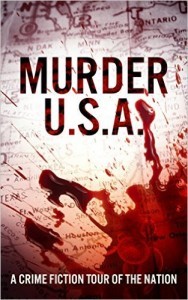 Editor Kristen Elise has arranged the excerpts by region. But each is labeled by genre and subgenre so you’ll know what you’re looking at. And it covers the gamut from romantic suspense to cozy mystery, legal thriller to paranormal mystery, historical mystery to contemporary suspense, near-future thriller to medical mystery, hard-boiled/noir to international thriller, and more.
Editor Kristen Elise has arranged the excerpts by region. But each is labeled by genre and subgenre so you’ll know what you’re looking at. And it covers the gamut from romantic suspense to cozy mystery, legal thriller to paranormal mystery, historical mystery to contemporary suspense, near-future thriller to medical mystery, hard-boiled/noir to international thriller, and more.
Of course, some of the novels may have venues that move from one location to another. And though this is Murder U.S.A., some even reach outside the United States. But all have a principal setting in the states.
California takes top honors – or maybe bottom honors – by having far and away the most murders, er, that is, the most novels set in a state in this anthology with ten. New England and the Mid-Atlantic has five novels listed. Texas and the Southwest is not far behind with four. Florida was the only region besides California consisting of a single state and it supplied two excerpts. Perhaps not a coincidence, California actually had the most murders in the last year for which there is official data. Texas and Florida claimed the next two spots.
So, I’d like to suggest that if you like murder mysteries, thrillers, or suspense books, grab this anthology and get a preview of the writing in thirty-one novels in these genres. You will get a glimpse of the writing style and some of the characters. That should give you insight into these books and lead you to some good reading.
In the spirit of full disclosure, I must admit that one of my books, A Ton of Gold, is in this anthology. I would love for you to read its excerpt, which will provide a look at some of the characters and a bit of the danger.
You can click on the link below and see Amazon’s description of Murder U.S.A.. Remember, it is FREE. You will get thirty-one previews for zero cost. What have you got to lose.
March 4, 2016
Story Telling – Is It Dead
Today’s post is by award-winning author Joyce Ann Brown. She writes the Psycho Cat and the Landlady Mysteries. Since she has cats and is a landlord, she knows what she’s talking about. But she says none of her tenants has been involved in kidnapping, theft, or murder. She talks about the tradition of storytelling.
the Psycho Cat and the Landlady Mysteries. Since she has cats and is a landlord, she knows what she’s talking about. But she says none of her tenants has been involved in kidnapping, theft, or murder. She talks about the tradition of storytelling.
For centuries, people spread their stories—news, legends, songs, myths, editorial comments, and, yes, their gossip—by word of mouth. We’re so advanced in this day and age that we now learn much of the above (yes, even gossip—misinformed letters to the editor, forwarded bogus emails, repeated media coverage of celebrity gaffs) through print or video sources. For sure, animosity can be spread around the world at the speed of a satellite, but so can messages of peace, hope, and silly animal tricks. Advanced? Or just different?
Is the verbal telling of our stories dead? Do we sit with our phones or tablets to read or watch at the expense of personal interaction or listening to oral presentations? Are people reading and watching without thinking? My opinion is that traditional story telling remains alive, just like reading books is as popular as ever.
For example: when my friends meet to walk a trail, exercise is our goal, but interesting conversation (sharing stories) becomes an important benefit. Our chatter doesn’t stop—well, maybe for a minute when we have to huff and puff our way up a steep incline—and it morphs continually from discussions of the latest newspaper story to an interesting science fact seen on the Discovery Channel to what’s happening on Downton Abby to religion to politics to books and movies… Oftentimes, we tell humorous stories from our pasts.
For another example: most of the time, people in restaurants and other public places talk to each other. Oh, yes, you say, but look at those people mesmerized by their cell phones, oblivious to their companions. What do those folks do with the information they learn via electronic gadgets? Some of it, naturally, goes in one eye and out the tops of their heads. Lots of times, though, they share what they’ve learned by telling someone. “I found out on Facebook that Lucy had twins.” “Look at this cute photo.” “Isn’t it awful about the mudslides in California? I saw one of those once, and let me tell you…”
Stories from the oral tradition, which have been passed down for centuries, become subject matter for our movies, books, and pictures. Consider all the fairy tales and legends so popular today. Pictographs and Hieroglyphics visualized stories that were first told orally and subsequently retold from the pictures. The authors of Harry Potter and Star Wars have reimagined the mythology of the world.
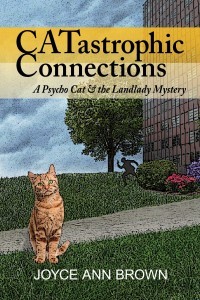 Modern audiobooks help continue the cycle. I, as an author, use in my works many stories that I hear from friends, overhear, or experience myself. Now, one of my books, Catastrophic Connections: A Psycho Cat and the Landlady Mystery, is being made into an audiobook. People get to hear the stories I put into print after hearing them told.
Modern audiobooks help continue the cycle. I, as an author, use in my works many stories that I hear from friends, overhear, or experience myself. Now, one of my books, Catastrophic Connections: A Psycho Cat and the Landlady Mystery, is being made into an audiobook. People get to hear the stories I put into print after hearing them told.
Having an audiobook made from my work has been an eye-opening, time-consuming, humbling, but gratifying interactive experience. It’s unsettling sometimes to hear my story read aloud and interpreted by the narrator, Diane Marty, an actress-turned-voice-artist. But I’m lucky she listens and responds when I tell her how the little old lady sounded in my head.
How was I to know that Diane would find so many separate words that should be compounded? It’s good that I’ll be able to correct mistakes in my manuscript and issue a new edition after this process is over.
Should I have foreseen that our project would be slowed because we had trouble deciding whether the name of one of the main characters, Adrianna, should be pronounced A-dree-an-uh or A-dree-ahn-uh? Ms. Marty had recorded the first ten chapters before we decided she wasn’t pronouncing it my way, and she was game enough to rerecord all those chapters.
Listening to each chapter after the narrator has recorded it, sending her the exact spot on the audio where she missed a word or where I want a change, changing the mistakes she finds in the text, and listening again after all the errors have been corrected (we hope) take lots of our time. The results, though, are well worth the work. I find myself hoping tons of people will find and listen to this awesomely-told version of my book and enjoy it as much as I have enjoyed helping to produce it.
What do you think? Is the story telling tradition still alive?
Find out more about Ms. Brown’s books at http://Author.to/joyceannbrown.
Follow her on Facebook: http://www.facebook.com/joyceannbrownauthor.
And please leave a comment on your thoughts about the story telling tradition. Thanks.
February 26, 2016
The Hogs Can Have Their Way
Here’s a little test on your knowledge of scientific formulas. What is the ratio of an igloo’s circumference and its diameter? Come on, make a guess. I’ll give the Answer below.
But first, the hogs.
I was driving home from the hospital one night. Earlene had been admitted for some non-life-threatening procedure and when she was asleep for the night, I headed home. There is a sharp curve in our driveway and as I turned, I saw that something ahead wasn’t right. I wasn’t sure what it was, but it wasn’t the normal look. I switched the lights up to high beam.
To my complete amazement, there were probably forty wild hogs grazing along the side of the driveway.
I knew wild hogs were creating havoc across the United States. Estimates four years ago put the total at between two and six million. Half of those were in Texas. Sows begin breeding at six to eight months and can have two litters in a year, although one is normal. These litters range generally from four to eight, but with good conditions may go as high as a dozen. With no natural predator, their numbers keep escalating.
They are probably the most destructive of all wild animals. They eat almost everything, and can destroy an entire crop of any food with amazing speed. They will kill and eat small livestock, including lambs, kids, calves, and deer. For those and other reasons hunters are welcome to kill as many wild hogs in Texas as they can and at any time of the year.
I was shocked. I had never seen even one on our property before. Now, there was a large herd.
It was not the last time I saw them.
We have some acreage and we enjoy walking around through the trees, down into some draws and up again, around a small lake. Several weeks later, Earlene and I were roaming around and came upon a somewhat smaller herd, between fifteen and twenty. Even that many encouraged us to alter our path.
Another time, Earlene was out walking by herself and came upon a sow and quite a few piglets. The mother did not like a human getting near her babies. Her snorts and aggressive moves quickly convinced Earlene to turn around and head back for the house.
There is an active market for live wild hogs. But these swine are smart and trapping them is not easy. In addition, should you catch a good number, they may destroy your enclosure and escape. Transporting them to market is another problem.
Since we do not raise crops or have any livestock, generally they do not stay long. A day or two and they move on to better grazing. They go where they want.
Prepared properly, the meat from wild hogs is generally considered to be better tasting than farm-raised pork. But we have made a decision. We will just go to the grocery store and buy our pork chops and hope that the wild hogs move on.
Okay. Now the answer to the question: What is the ratio of an igloo’s circumference and its diameter?
Answer: Eskimo Pi.
If you want to complain about my humor, just leave me a comment. And thanks for stopping by.
I would like to invite you to join my e-mail list. First, I promise not to send you too many – maybe two or three a month. And I will not give away or sell your e-mail to anyone. That’s also a promise. But, I will be giving away valuable or interesting or funny things from time to time. Why would I do this? For one thing, I want you to feel my e-mails are worth opening. And giving something away always makes me feel good.
So, send me an e-mail with “Free Book” in the subject line, to:
jamesrcallan@gmail.com
In the body, say, “I’m in. And I’d like a free (digital, or PDF) copy of a highly rated mystery book.” That’s it. I’ll then send you a great mystery. And we’ll both have a better day. Thanks.
James R. Callan (Jim)
February 19, 2016
On Finishing a Book
Eileen Obser is a writer and editor and has been teaching creative 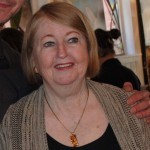 writing in New York for over 20 years. She is a graduate of the MFA program in Creative Writing and Literature at Stony Brook University Southampton. Her stories and personal essays have been published in many magazines, anthologies and newspapers, including The Washington Post and The Philadelphia Inquirer Magazines, Newsday, The Boston Globe, The Village Voice, The East Hampton Star, Proteus, and The Southampton Review literary magazines. Here are here thoughts on “On Finishing a Book.”
writing in New York for over 20 years. She is a graduate of the MFA program in Creative Writing and Literature at Stony Brook University Southampton. Her stories and personal essays have been published in many magazines, anthologies and newspapers, including The Washington Post and The Philadelphia Inquirer Magazines, Newsday, The Boston Globe, The Village Voice, The East Hampton Star, Proteus, and The Southampton Review literary magazines. Here are here thoughts on “On Finishing a Book.”
I recently completed a short novel, Two Rooms, Shared Bath, based on my 30-plus years experience as a landlady. I first wrote this in 2008, for an MFA novella class taught by writer Roger Rosenblatt. Roger and my colleagues loved the story, as did Ursula Hegi, the novelist, and her students, in a fiction class the following year. The first draft came to me quickly, based on real characters who were bed & breakfast guests or tenants over the years. And when I say “characters” that’s exactly what they were – strangers who stayed short-term or long, with strong, often annoying, personalities I don’t believe I could have made up. It’s a mainstream novel, funny in parts, and not so funny, too.
After completing my MFA in 2010 (I went back to school later in life) I concentrated on other work and put Two Rooms aside. The thought of spending more time writing about such disagreeable tenants simply did not appeal to me. I wanted the memory of them to go away, so the book was moved to a carton in the basement.
 In 2012 I resurrected Two Rooms briefly; I did some revisions, rallied up some enthusiasm and excitement; but the thrill was soon gone and, once more, the novel was shelved downstairs. I finished Only You, a memoir published in 2014 by Oak Tree Press, another book that had spent years being revised, rejected, and in hiding.
In 2012 I resurrected Two Rooms briefly; I did some revisions, rallied up some enthusiasm and excitement; but the thrill was soon gone and, once more, the novel was shelved downstairs. I finished Only You, a memoir published in 2014 by Oak Tree Press, another book that had spent years being revised, rejected, and in hiding.
Six months ago Two Rooms beckoned me again. This time around I really dug in, and enjoyed the process. Now, after much editing, it’s almost set to go. So how do I feel — how do any of us feel – when our books, fast-written or long and slow in the making, are done? I like to quote the writer, Dani Shapiro (Devotion: a Memoir and Still Writing: the Perils and Pleasure of the Creative Life) who recently blogged that the very sentence, “I’ve just finished my new book” haunts her “with a sense that I must be lying, that the book can’t be finished.” I understand what she’s saying and thinking, just like so many of us writers must. We have to go back to it, over and over, “revise, chisel, hone, clarify . . . make it better until we can no longer make it better.”
And that’s where I am now. I do not plan on putting Two Rooms back into storage; I’m getting too old to put manuscripts on hold like that. I’ll soon “abandon it to the world,” as Shapiro states. Two more books are waiting for me, plus essays and whatever else comes into this writer’s head.
I’d love to know if those who read this also have books in hiding, or half-drafted, or almost ready but worry: are they really worth the time and effort. Self-doubt can be a real handicap in our world. No one may be anxiously awaiting our hidden masterpieces but we really must resist the temptation to say “who cares?” and get on with it. We care. We put ourselves into the thinking, the researching, and the writing, and surely we deserve to see the finished products of our imaginations. We must find those hidden treasures and bring them back into the light.
JIM: A great treatise on a moment all writers face. Tell us about your experiences in this situation. The book is finished – or am I willing to call it finished?
February 12, 2016
Are You a Scaredy Cat?
Today’s guest is K. Dawn Byrd, a prolific and talented writer w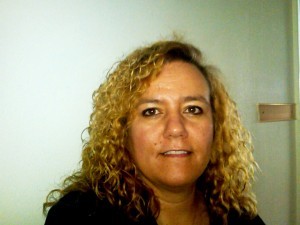 ho said she writes for the pure joy of putting words on paper. At one point she told me she wrote in marathon sessions, finishing a book in 30 days. Today, she talks about switching some of her secular books to Christian books.
ho said she writes for the pure joy of putting words on paper. At one point she told me she wrote in marathon sessions, finishing a book in 30 days. Today, she talks about switching some of her secular books to Christian books.
Are you a scaredy cat?
I’ve written several genres, but my favorite is suspense. I find it exciting to write and my best-selling books were a secular series using a different pen name. In the series, I explored different mental health diagnosis in each book. In one of the books, the bad guy suffered from Dissociative Identity Disorder and had a fascination with eyeballs, which he kept as souvenirs from his victims. I have a file of fans waiting on the next release in that series, which I ceased writing and removed from print when I returned to my first love, Christian fiction.
You’d think if I could write blood and guts, it would be my genre of choice to read. Wrong. You’d also think I’d enjoy horror flicks. Wrong. I’m such a visual person that horror movies stay with me for weeks, making me leery of being in a dark basement alone.
Amazing Love, my last Christian Fiction release is a romantic suspense novel about Hosea and Gomer from the Bible. It’s a modern-day story in which my heroine finds herself in a terrible situation when she chooses to leave her loving husband and follow a life of sin. Even though she’s never stalked by the proverbial serial killer who moves through the cover of night in my secular works, she finds her own brand of trouble, paying a huge price for her sin.
 The idea of telling the modern Hosea and Gomer story came to me while reading the story in the Bible one day in my daily Scripture reading. I’m amazed at how much God loves us and how willing he is to forgive us if we approach him in a true spirit of remorse and ask for forgiveness. It was a hard book to write because I tortured my modern-day Gomer. I recently read the novel again and put it through another edit and found myself in tears at certain parts in the book. Odd, considering that I wrote it, but I found that I loved my character and hated seeing her suffer. At the same time, I loved seeing God’s love for her. (Click on the cover to visit the book on Amazon.)
The idea of telling the modern Hosea and Gomer story came to me while reading the story in the Bible one day in my daily Scripture reading. I’m amazed at how much God loves us and how willing he is to forgive us if we approach him in a true spirit of remorse and ask for forgiveness. It was a hard book to write because I tortured my modern-day Gomer. I recently read the novel again and put it through another edit and found myself in tears at certain parts in the book. Odd, considering that I wrote it, but I found that I loved my character and hated seeing her suffer. At the same time, I loved seeing God’s love for her. (Click on the cover to visit the book on Amazon.)
So, tell me…where do you stand when it comes to suspense? Horror? Blood? Can you read it? Write it? Watch it? Are you like me and you can write it, but can’t read it or watch it? Lord willing, I’ll be visiting the secular suspense series soon as I recently contacted Amazon about the possibility of editing them and placing a disclaimer on them that they’ve been republished as Christian fiction. With Amazon’s blessing, they’ll be released as a Christian Fiction suspense series after I pray over them and ask God’s guidance on how to show his love and grace throughout the plot. Please pray for me that if it’s not God’s will that I publish them again that I’ll leave this series dead forever. I want to be in God’s will in every aspect of my life. May God bless you!
JIM: So, dear Reader, tell us where you stand when it comes to suspense. Can you read it, watch it, write it, or … what?
February 5, 2016
The Funny Thing about Murder
After earning a degree to teach Spanish, D.R. Ransdell moved to Durango, Mexico. Her favorite Saturday nights were spent at house parties where guests fought over the guitar. When she returned to the U.S. five years later, she was so homesick for Mexico that she joined a mariachi band. Within weeks she had ideas for dozens of murder mysteries! She’s published six novels using some of those ideas, and has pieces in three of the Chicken Soup … series. Here’s her take on the difficult job of working humor into murder mysteries.
to Durango, Mexico. Her favorite Saturday nights were spent at house parties where guests fought over the guitar. When she returned to the U.S. five years later, she was so homesick for Mexico that she joined a mariachi band. Within weeks she had ideas for dozens of murder mysteries! She’s published six novels using some of those ideas, and has pieces in three of the Chicken Soup … series. Here’s her take on the difficult job of working humor into murder mysteries.
The funny thing about murder is that it really shouldn’t be funny. Oh, it’s swell to kill off the bad guy when it’s a bad boss, bad relative, bad neighbor, bad lover, etc., etc., but for a mystery to pull any emotional weight, there needs to be an undeserving victim. Some kind of right should be wronged, but since there’s a price to be paid, the story shouldn’t actually be funny, right?
When a friend reviewed a draft of my latest mystery, he questioned me on this topic. “The ending is awfully dark,” he said. “Are you sure that’s what your readers want?” I went back to see if I could change the final paragraphs. I understood my friend’s comment—yes, the ending put a damper on things. The heroine didn’t quite get what she wanted. She wound up more pensive and confused at the end than at the beginning—in some ways she hadn’t made much progress. But she’d also lost someone dear to her. She needed a way to deal with that, didn’t she?
I’ve come across this conundrum in my writing a couple of times. While I like using humor in my mystery series—my protagonist, a male mariachi violinist, does make lots of mistakes that get him into trouble with friends and loved ones—so far the endings have all been gray.
For a while I kept trying to figure out why I couldn’t reconcile the desire to be light-hearted and entertaining with my characters’ reactions to the deaths of their friends and acquaintances.
The useful writing guide Story Trumps Structure by Steven James helped me analyze this issue. James explains that cozy readers want something safe and fun. They’re looking for a light-hearted puzzle. That’s well and good, but there’s a catch: “This genre presents a difficult balance of trying to care for your readers’ expectations while not diminishing the value of human life—a challenge for even the most gifted authors.” (In Chapter 4, “Escalation.”)
James is quite right. The cozy—or any humorous mystery—is tricky. You want your protagonists to care, but you don’t want them to fall apart to the point that they can’t function; after all, they might have to get back out there and save the day. But James’ observation does point to a dilemma. Do I want to simply provide my readers with an enjoyable read, or do I want them to think about moral dilemmas?
In the Andy Veracruz series, I want to provide readers with insight about music or give musicians the chance to ponder familiar situations. I’ve been toying with an idea for a new murder mystery series that would take place in Italy and focus on culture/language/travel. In both cases, I certainly want readers to laugh. I want them to keep reading and be thoroughly entertained. The appropriate level of humor, however, is yet to be determined.
In the meantime, I’ll continue to collect ideas for future murder mysteries. Cozy or not, there are still plenty of people out there who deserve the best fictional death I can muster for them. While I don’t want to let my protagonists off the emotional hook, I’ll try to include some comic relief. Humor is a valuable tool in our daily lives, so we need to embrace it. After all, who hasn’t told a few jokes at a funeral parlor?
What are your own views about the use of humor in mystery? If you’re a writer, how do you deal with the situation yourself? If you’re a reader, what do you prefer?
JIM: Thanks D.R. for some food for thought. I hope some of our readers will leave their thoughts on humor in a murder mystery.
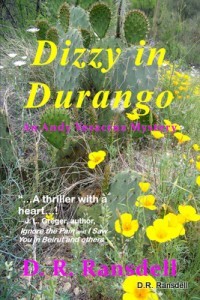 Her latest release is Dizzy in Durango (funny, but not too funny!) Missing women, abandoned children, and a crazy mariachi fan add up to further trouble for Andy Veracruz. Soon he’s stuck with an angry would-be girlfriend and a self-appointed younger brother who is more reckless than he is. No wonder he feels dizzy!
Her latest release is Dizzy in Durango (funny, but not too funny!) Missing women, abandoned children, and a crazy mariachi fan add up to further trouble for Andy Veracruz. Soon he’s stuck with an angry would-be girlfriend and a self-appointed younger brother who is more reckless than he is. No wonder he feels dizzy!
Take a look at: http://mybook.to/dizzyindurango
And give us your thoughts on this conundrum. Thanks.



